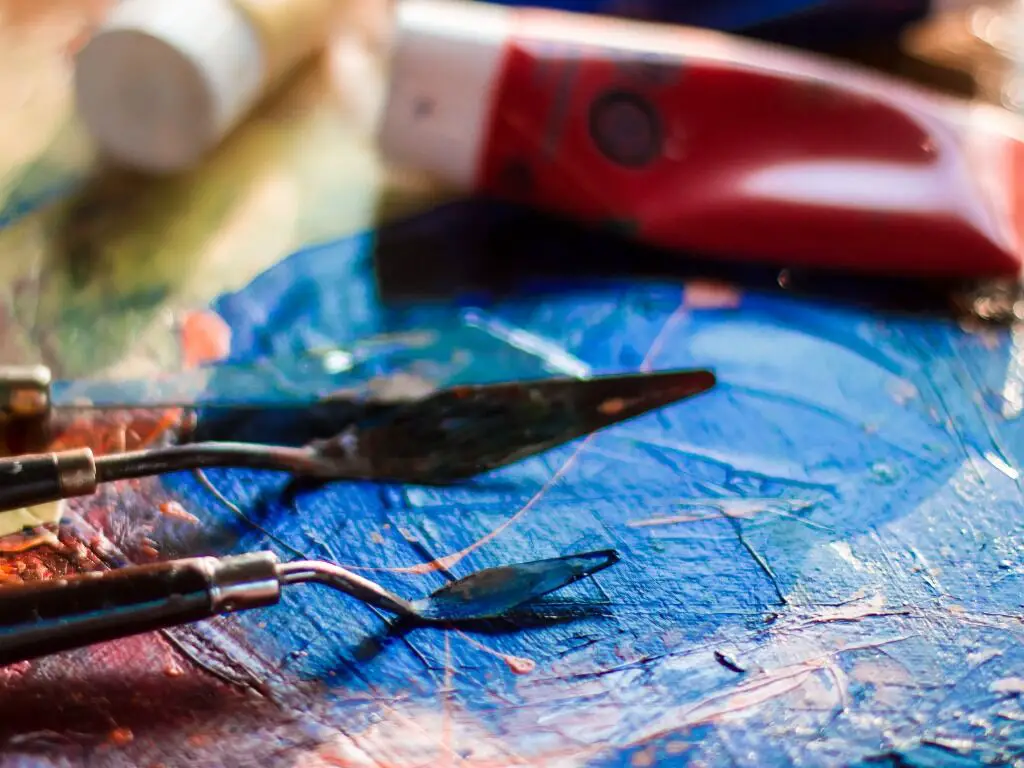What Surface Is Best For Acrylic Paintings?
There are an enormous selection of commercially produced surfaces suitable for acrylic painting. Paper, canvas and board are the most popular, but acrylic paint can be used on all sorts of surfaces. These can include wood, leather, stones, fabric, mirrors and even indoor walls. Acrylic paint can be used to decorate a variety of artistic projects, it is very versatile.
Paper
One of the cheapest surfaces is paper. However, ordinary printing or writing paper is thin and lightweight. It will crease and buckle when wet paint is applied to it. It will need to be dampened and taped down onto a flat surface using adhesive paper tape before painting. This helps prevent buckling. Always allow the paint to dry before removing the adhesive tape when you have finished painting.
This method is also suitable for use with watercolour paper, either hot-pressed or cold-pressed. The absorbent quality of watercolour paper is particularly good if you want to dilute the acrylic paint to make various washes of colour. Once each wash has dried, another one can be layered over the top without dislodging or removing the original pigment, unlike watercolour paint.
Illustration / Bristol Board
These are stronger and firmer than paper because they are mounted to a heavyweight cardboard. They are available with at least three different types of surfaces. Smooth (or hot-pressed), semi-smooth (or cold-pressed) and vellum (which has a rather rough surface, ideal for use with pastels). These boards are particularly suitable for intricate and delicate designs and also acrylic paintings made using fine brushes.
Acrylic Paper
There are specially made papers designed for use with acrylic paints. They are heavyweight and often pressed into a canvas-style surface. Available in book form, in varying sizes and number of pages these art pads are perfect for acrylic painting. The pages can be carefully and individually removed for use. This surface is inexpensive and suitable for both beginner and the more experienced artist. Highly recommended for everyone.
Canvas
This is available in art supply shops pre-stretched and gessoed, ready for painting on. They are made in all sorts of sizes and shapes to suit various projects.
However, if you want your painting to be especially large or to a specific unusual size, then you can make your own canvas. You can stretch canvas sheeting cut to the required dimensions over wooden stretcher bars and staple it firmly down. Remember the canvas will need several coats of gesso to help the acrylic paint to adhere securely. Painting on a canvas is a very old tradition and somehow helps to give the impression of a professional artwork. Some ready-made canvases can be quite expensive.
Canvas Boards
Again, these are readily available in art supply shops. They are boards of various sizes, covered with canvas and pre-gessoed so they are ready for immediate use with acrylic paints. Ideal for everyone to use.
Fibreboard / MDF / Hardboard / Masonite
These boards are made from wood fibres mechanically compressed to make a flat, firm surface. They will need several coats of gesso before painting begins.
There are lots of different artists boards available in varying dimensions. Most types found in art shops are usually available pre-gessoed, which is time-saving although they are more expensive.
Some artists have large boards from timber merchants cut to their own specifications, especially if they want to make a large painting. Of course these boards will need coats of gesso after cutting to size.
Wood Panels
Wooden artist’s panels are commercially available. Some have a wooden surround at the back, called a cradle. Birchwood panels are particularly smooth, this is perfect for very fine brushwork. They come with or without gesso coating. Wood panels are excellent for acrylic painting.
Aluminium
These are lightweight thin panels made from aluminium. Some have a polyethylene core for added strength. Aluminium panels are great for painting or printing on.
Books and Journals
These books with blank pages can be used for practising colour swatches and painting thumbnail sketches. They are ideal for compiling information prior to starting an acrylic painting. They are handy for quick plein-air artworks when travelling or out and about. These little pictures make excellent reference material for future paintings. Perfect for recording various colours and views. These books keep your recorded information in one place.
As you can see, there is a huge choice of different surfaces on which to paint. It is interesting and fun to try them all out just to see which you prefer working on. Meanwhile, just use whatever is to hand so that you can hone your brushwork skills. Even find an old stone outdoors, wash and dry it first….Now, go and paint!!!



